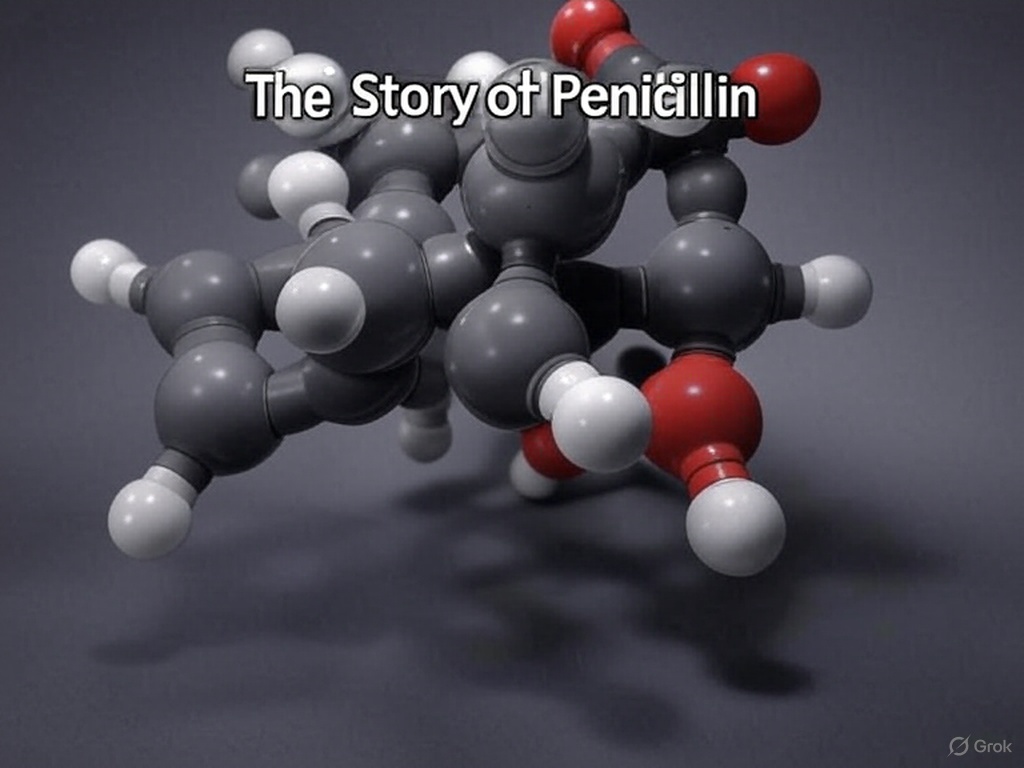Imagine a world where a simple infection could mean a death sentence. A world where a scraped knee, a sore throat, or a minor surgery carried the risk of untreatable bacterial infections. That was the reality in the early 20th century—until a messy laboratory and a stroke of serendipity gave us one of the greatest medical breakthroughs of all time: penicillin. This is the story of how a mistake, a forgotten petri dish, and a curious scientist changed the future of medicine forever.
A Cluttered Lab and an Unexpected Find
It was September 1928, and Alexander Fleming, a Scottish bacteriologist, was working in his lab at St. Mary’s Hospital in London. Fleming was no stranger to studying bacteria, but he wasn’t exactly known for his tidiness. His lab was often a chaotic jumble of petri dishes, microscopes, and experiments in various stages of progress. Before heading off for a summer holiday, Fleming had been culturing Staphylococcus bacteria—nasty microbes responsible for everything from boils to life-threatening infections. He stacked his petri dishes in a corner and left for a well-deserved break.
When he returned, Fleming began the unglamorous task of cleaning up his lab. As he sorted through the pile of petri dishes, one caught his eye. Most of the dishes were covered in the expected yellow bacterial colonies, but this one was different. A patch of mold had grown on the dish, and around it, the bacteria were gone. It was as if the mold had created an invisible barrier, wiping out the Staphylococcus in its vicinity.
Most scientists might have tossed the contaminated dish into the sink and moved on. But Fleming was curious. “That’s funny,” he reportedly said, peering at the unusual sight. Instead of discarding it, he decided to investigate. What was this mold, and why were the bacteria around it dead?
The Birth of Penicillin
Fleming identified the mold as a strain of Penicillium notatum, a common fungus. He hypothesized that it was producing a substance that killed the bacteria. He named this mysterious substance “penicillin” and began testing it in his lab. His early experiments confirmed that penicillin could destroy a wide range of harmful bacteria without harming human cells—a groundbreaking finding. However, producing enough of the substance for practical use was a challenge, and Fleming’s initial attempts to purify and stabilize it fell short.
For a decade, penicillin remained a scientific curiosity, a promising but underdeveloped discovery. Fleming published his findings, but the medical world didn’t yet grasp its potential. It wasn’t until the 1940s, during the chaos of World War II, that penicillin’s true power would be unleashed.
From Lab to Lifesaver
As the war raged, infections were claiming as many lives as bullets and bombs. Soldiers with wounds that should have been treatable were dying from bacterial infections. The urgent need for new treatments spurred scientists to revisit Fleming’s work. A team at Oxford University, led by Howard Florey and Ernst Chain, took on the challenge of scaling up penicillin production. They developed innovative techniques to grow the mold in large quantities and extract the precious antibiotic.
By 1941, the team had enough penicillin to test on a human patient—a policeman named Albert Alexander, who was dying from a severe infection caused by a scratch. After receiving penicillin, Alexander’s condition improved dramatically. Tragically, the team ran out of the drug, and he later succumbed to the infection. But the trial proved penicillin’s potential. With funding and support from the United States, production ramped up, and by 1943, penicillin was being mass-produced to treat wounded soldiers on the battlefields of World War II.
The impact was immediate and profound. Penicillin turned once-fatal infections into manageable conditions. It saved countless lives during the war and laid the foundation for the antibiotic era.
A Mistake That Shaped the Future
The discovery of penicillin wasn’t the result of a grand plan or a meticulously designed experiment. It was a happy accident, born from a forgotten petri dish in a cluttered lab. Yet its impact on the world is immeasurable. Antibiotics revolutionized medicine, making surgeries safer, treating infections that were once deadly, and extending human lifespans. They enabled advancements in chemotherapy, organ transplants, and neonatal care—none of which would be possible without the ability to control bacterial infections.
Fleming, Florey, and Chain shared the 1945 Nobel Prize in Physiology or Medicine for their work on penicillin. But Fleming remained humble about his role, often emphasizing the role of chance in his discovery. “Nature made penicillin,” he once said. “I just found it.”
A Legacy with Lessons
The story of penicillin is more than a tale of scientific triumph—it’s a reminder of the power of curiosity, persistence, and collaboration. Fleming’s willingness to investigate an anomaly, combined with the Oxford team’s determination to turn a lab curiosity into a practical drug, transformed a mistake into a miracle.
But the story also carries a cautionary note. Overuse of antibiotics has led to the rise of resistant bacteria, threatening to undermine the very revolution penicillin started. Today, scientists are racing to develop new antibiotics and strategies to combat superbugs, echoing the urgency of the 1940s.
As we reflect on penicillin’s accidental discovery, we’re reminded that some of the greatest breakthroughs come from unexpected places. A moldy petri dish, a curious mind, and a bit of luck changed the course of history. Who knows what other world-changing discoveries are waiting in the overlooked corners of a lab—or the world around us?
Related Posts
- SHA: Emergency Evacuation and International Referrals – Access to Critical Care
- SHA: Dental and Optical Benefits – Caring for Your Smile and Vision
- SHA: Maternity Coverage – Comprehensive Care for Growing Families
- SHA: Outpatient Benefits Decoded – Your Day-to-Day Medical Coverage
- SHA: Inside Your Inpatient Coverage – Hospital Care Benefits Explained
- SHA: Your Benefits Breakdown – What Every Teacher Gets Based on Job Group
- TSC Unveils Comprehensive Medical Cover for All Teachers Starting December 2025
- Tragedy Strikes KJSEA Marking Exercise as Examiner Dies at Machakos Girls High School
- Shadows of Empire: How the West Maintains Control in Africa
- Why Senator Okiya Omtatah Wants to Abolish the Bomas National Tallying Centre (And Why It Matters for 2027)
- What to Study Now for a Successful Career in Kenya’s Future (2026-2050)
- AUDIT SHOCK: Only 3,000 Schools Get Capitation Funds as Govt Cracks Down on “Ghost Students”
- TSC’s Promotion Blueprint: How Teachers Earn Their Next Grade
- TSC CAREER OPPORTUNITIES: Deputy Director & Assistant Director Positions
- TSC 24,000 TEACHER INTERN VACANCIES
- EGYAID Scholarship Program 2025-2026
- Oman Scholarship Program 2025-2026
- 2026 COMMONWEALTH PhD & MASTERS SCHOLARSHIPS
- Papaya Seeds: Nature’s Hidden Powerhouse
- Guide to Teacher Promotion with TSC
- Teacher Transfer Process Tutorial













